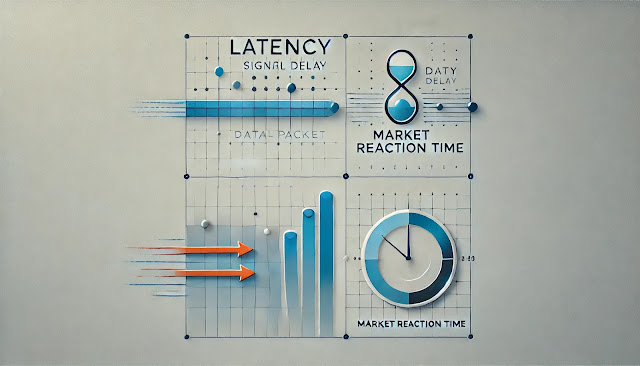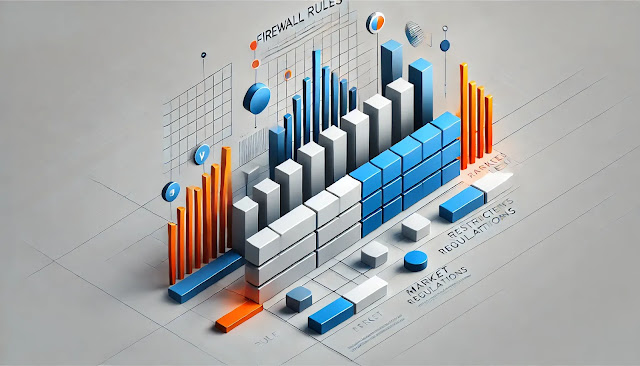Stock Market Concepts Through the Eyes of a Network Engineer
As a network engineer, I spend most of my time configuring routers, troubleshooting protocols, and optimizing network paths. But like many of you, I also have a passion for analyzing companies and making smart investments in the stock market. It’s fascinating how some key concepts in networking align so closely with stock market principles. This inspired me to create an article that bridges the two worlds.
If you’re a network engineer who also enjoys delving into P/E ratios, stock volumes, or market trends, this blog is for you. Let’s match some fundamental networking concepts like BGP, DHCP, DNS, and VRRP with popular stock market terms. It’s not only insightful but also a fun way to understand both worlds better!
BGP (Border Gateway Protocol) vs. Stock Market Indices
Networking:
BGP is the backbone of internet routing, ensuring data packets travel the best path across autonomous systems. It decides which path to take based on various metrics like AS paths and route preferences.
Stock Market:
Stock market indices, like the NASDAQ or S&P 500, are the “routes” investors use to navigate market performance. They aggregate the performance of a basket of stocks, offering a clear view of market trends.
Why They Match:
BGP guides data to its destination, just as indices guide investors to understand overall market direction. Both simplify complexity—BGP by making routing efficient and indices by summarizing market performance.
DHCP (Dynamic Host Configuration Protocol) vs. Market Volume
Networking:
DHCP dynamically assigns IP addresses to devices in a network, ensuring no two devices use the same address and that resources are efficiently allocated.
Stock Market:
Market volume measures the total number of shares traded for a stock during a specific period. High volume ensures liquidity, making it easier for buyers and sellers to execute trades.
Why They Match:
DHCP’s dynamic allocation of IPs mirrors how trading volume works. Both ensure smooth operations, whether it’s devices communicating in a network or investors buying and selling shares.
DNS (Domain Name System) vs. Stock Tickers
Networking:
DNS is like the internet’s phonebook. It translates user-friendly domain names (e.g., google.com) into machine-readable IP addresses so devices can connect.
Stock Market:
Stock tickers, like AAPL (Apple) or MSFT (Microsoft), act as shorthand symbols for companies, making it easy for traders to identify and track stocks.
Why They Match:
DNS and stock tickers simplify user interactions with complex systems. While DNS maps domains to IPs, stock tickers map company names to trading symbols. Both act as translators, streamlining the user experience.
VRRP (Virtual Router Redundancy Protocol) vs. Hedging Strategies
Networking:
VRRP creates redundancy by allowing multiple routers to work together. If the primary router fails, a backup takes over without disrupting the network.
Stock Market:
Hedging involves creating investment strategies to offset potential losses. For example, investors might buy options to protect against stock price drops.
Why They Match:
Both VRRP and hedging are about minimizing risk. VRRP ensures network uptime, while hedging safeguards investments. Both provide peace of mind by preparing for the unexpected.
QoS (Quality of Service) vs. P/E Ratios
Networking:
QoS ensures high-priority traffic (like video calls) gets the bandwidth it needs to perform well, even during network congestion.
Stock Market:
The P/E ratio helps investors prioritize stocks by comparing their price to earnings. A low P/E might indicate an undervalued stock, while a high P/E suggests high growth potential.
Why They Match:
Both QoS and P/E focus on prioritization. QoS allocates resources to critical traffic, while P/E helps investors decide which stocks deserve attention. It’s about identifying what matters most in their respective domains.
Latency vs. Market Reaction Time
Networking:
Latency measures the delay in data transmission. Lower latency means faster communication and better performance.
Stock Market:
Market reaction time refers to how quickly stock prices adjust to news or events. Faster reactions indicate a more efficient market.
Why They Match:
Both latency and reaction time are metrics for speed. Whether it’s data traveling across a network or market prices reacting to news, lower times are always better.
Network Congestion vs. Market Volatility
Networking:
Network congestion happens when too much data flows through a network, causing delays or packet loss.
Stock Market:
Market volatility describes rapid and unpredictable price movements, creating uncertainty and risk for investors.
Why They Match:
Both congestion and volatility represent instability. Just as congestion slows down networks, volatility disrupts market stability. Managing both requires robust systems and strategies.
Firewall Rules vs. Market Regulations
Networking:
Firewall rules filter network traffic, allowing only authorized data to pass through.
Stock Market:
Market regulations, set by governing bodies like the SEC, ensure fair trading practices and protect investors.
Why They Match:
Firewalls and regulations are gatekeepers. They ensure safety and prevent malicious activity, whether it’s unauthorized traffic in networks or unethical behavior in markets.
Wrapping It All Up
As network engineers, we’re already familiar with protocols, redundancy, prioritization, and optimization. These same principles apply when analyzing companies and navigating the stock market. By drawing parallels between networking and stock market concepts, we can make complex financial ideas more relatable and fun to explore.
I hope this unique perspective resonates with my fellow network engineers who enjoy both designing efficient networks and making smart investments.
Let’s keep learning, growing, and connecting these dots—both in technology and finance!


.jpg)




%20with%20simple%20v.webp)













